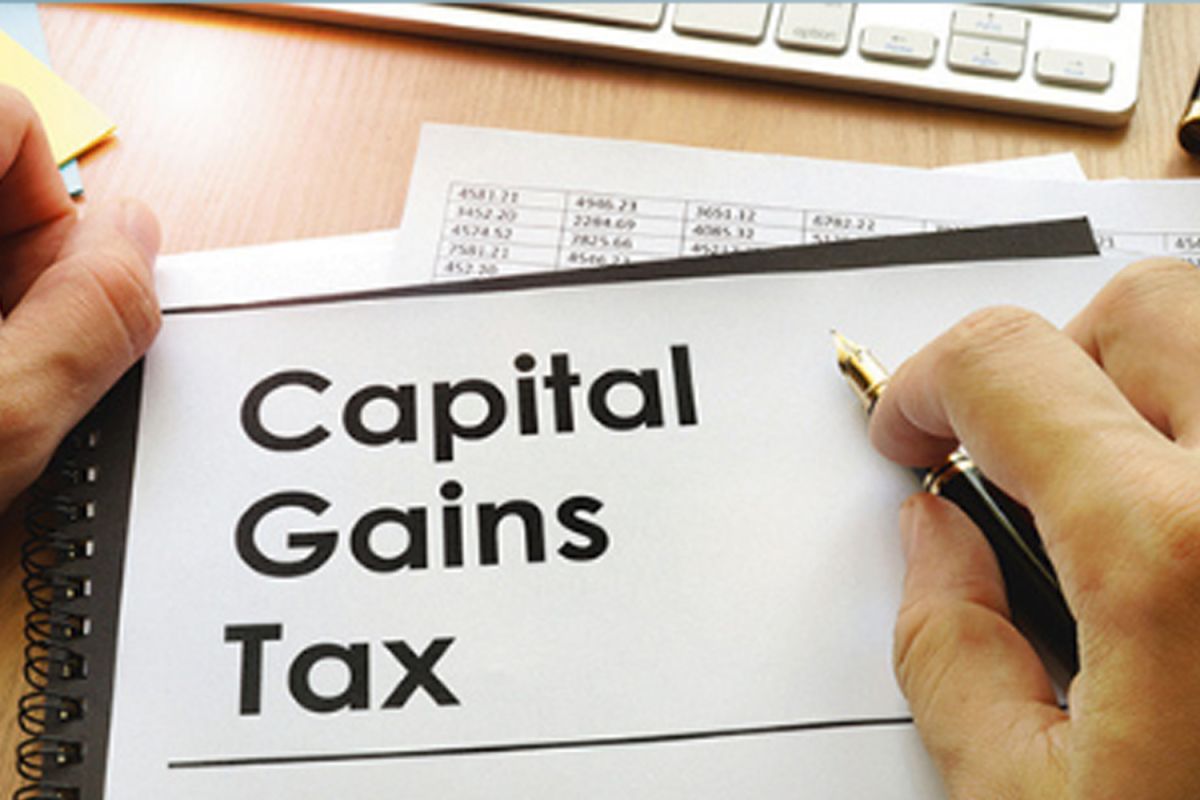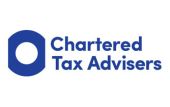
CGT changes in the autumn Budget 2024
Key points
- In the lead up to the Budget, there was a surge in work with a significant number of business owners hoping to crystallise a CGT disposal prior to the budget.
- The CGT rate for gains falling wholly within the basic rate band was increased from 10 to 18% and the main rate was increased to 24%, both for gains accruing on, or after, 30 October 2024.
- There was no change to the rate for residential property, which remains at 24%.
- The BADR rate of CGT remains at 10% until 5 April 2025. It is changing to fall in line with the newly announced lower rate of CGT of 18%, but this is being phased in over two years.
- The rate of CGT on carried interest is increasing from 6 April 2025 to a single rate of 32%. Carried interest will be subject to an income tax based regime from April 2026.
Changes to capital gains tax (CGT) were among the most anticipated elements in the run-up to the first Labour Budget in 14 years. Unlike other taxes, CGT was notably left open for potential increases in the Labour manifesto.
As a result of this, many transactions tax advisers, including the authors, saw a surge in work with a significant number of business owners hoping to crystallise a CGT disposal prior to the Budget, and secure the 10%/20% rates of tax, assuming that any rate changes would have immediate effect.
At one point we were questioning whether this was all a ruse to create a short-term spike in tax revenues; if it was, it worked. However, as expected by many, we did see increases in CGT and some of those changes were, indeed, enacted from 30 October 2024. This means that transactions that completed up to 23:59 on 29 October 2024 (and we are aware of some committed M&A advisers that pushed that deadline to the limit) benefited from CGT rates of 10% or 20%, whereas from midnight on 29 October, the main rate of CGT was 24% (even though we didn’t find out until around 1 pm).
On a practical note, CGT is a transaction-based tax, so it is, arguably, simpler to change mid-year than other taxes (income tax, NIC, etc), which would require changes in tax software that would be difficult to implement on short notice. That said, we have been hearing a lot from colleagues and in the tax press about the issues that a mid-year rate change is causing and the workarounds that HMRC is having to put in place. So maybe a mid-year change wasn’t quite as simple as the chancellor probably thought.
The rates
The CGT rate for gains falling wholly within the basic rate band was increased from 10 to 18% and (as noted above) the main rate was increased to 24%, both for gains accruing on, or after, 30 October 2024.
This was rather lower than some of us expected, with predictions ranging from 30 to 45% for the main rate being bandied about before the Budget speech. Given how much of the content of the Budget was trailed (or leaked, as some would say), we wonder whether rumours of much higher rates were designed to manage expectations, so that a rate of ‘only’ 24% came as a bit of a relief. On the other hand, we assume that the chancellor was aware of the Laffer curve, which essentially tells us that there is an optimum rate of tax, and increasing rates excessively can reduce the tax take, due to behavioural changes, so maybe there was some science behind the new rate.
There was also no change to the rate for residential property, which remains at 24%, so we see a return to a single CGT rate for most assets.
Business asset disposal relief (BADR)
We tax seers had also confidently predicted the end of BADR from 30 October, so we were wrong again. Indeed, many of us were extremely surprised to see that the BADR rate of CGT remains at 10% until 5 April 2025. The rate will be changing to fall in line with the newly announced lower rate of CGT of 18%, but this is being phased in over two years, with the rate increasing from 10% to 14% from 6 April 2025, and to 18% from 6 April 2026. The lifetime limit will remain at £1m.
So those of us in the M&A market probably have another five months or so of selling businesses to take advantage of a favourable tax rates, with there now being a 14% arbitrage between the BADR and the main CGT rates. Prior to 30 October 2024, BADR was worth up to £100,000, ie £1m at 10% compared to the previous 20% main rate of CGT. For the next five months the benefit is £140,000, a further incentive to complete transactions ahead of the new tax year.
Perhaps the chancellor really is looking for a CGT bonus in January 2026, when the CGT on 2024-25 transactions comes due. But while some may view this as a thinly-disguised attempt by the government to drive near-term tax revenue, the retention of the £1m BADR lifetime allowance will come as a welcome relief for many business owners, especially given speculation over the abolition of BADR.
Investors’ relief
This rather less used relief (from our experience) is being brought into line with BADR, with the rate increasing from the current 10% to 14% from 6 April 2025 and 18% from 6 April 2026. The lifetime limit of £10m is reduced to £1m for disposals on or after 30 October 2024, so this change had immediate effect. Since we have never seen this relief in practice, we suspect that this is more of a tidying up exercise than a likely revenue raiser.
Carried interest
The rate of CGT on carried interest is increasing from 6 April 2025 to a single rate of 32%, replacing the existing 18% and 28% rates. More importantly for the long term was the announcement that carried interest will be subject to an income tax based regime from April 2026. We are sure that those in the private equity arena will be waiting for further announcements with a certain amount of trepidation.
These are the headline changes which, given the level of scepticism in Budget predictions over the last few months, appear to be much less severe than many anticipated and therefore we are seeing slightly more positivity in the Budget reactions. Nevertheless, those who completed transactions by the 29 October can feel reassured by their timely decision. However, it is important to be aware of some detailed anti-forestalling rules. Those of us with long tax memories will realise that many of these are similar to those attending the change from entrepreneurs’ relief to BADR in FA 2020, which were themselves a reaction to some of the planning that was done when taper relief was abolished in 2008.
At a high level, the anti-forestalling rules are designed to ensure that artificial arrangements intended to lock in the existing CGT rates will be ineffective. The rules are in Parts 2 and 3 of Schedule 2 of the Finance Bill.
Anti-forestalling rules: conditional contracts
One of the key anti-forestalling rules relates to the rules for unconditional contracts, whereby the tax point of a transaction is the date contracts are exchanged rather than the date of legal completion (TCGA 1992, s 28(1)). The intention of the main transitional rule (Sch 2 para 7) is that, if an unconditional contract has been entered into before 30 October 2024 but legal completion occurs after that date, the CGT tax point is shifted to the date of legal completion, so that the new CGT rates will apply. This is designed to prevent the sort of planning that went on in 2008, whereby assets were unconditionally sold to family trusts, but completion never took place. The idea was that completion of the sale to the trust would only occur if and when there was an onward sale to a third party, but the taper relief CGT rates would apply because section 28 would deem the gain to have accrued when the unconditional contract was made.
Effectively, this anti-forestalling provision requires us to ignore s 28, and applies unless the contract is an ‘excluded contract’.
The ‘excluded contract’ definition has two conditions. The first is that no purpose for entering into the contract can have been to obtain a s 28 advantage. In other words, the transaction must not have been completed for the purpose of securing the lower CGT rates by entering into an unconditional contract before the rates increased.
This is a somewhat curiously worded provision because, whilst we often see such provisions referring to ‘one of the main purposes’ being to obtain some form of advantage, here we are required to consider that there is ‘no purpose’. In other words, even if the use of s 28 is a minor purpose of entering the contract, this anti-forestalling rule would apply.
That being said, provided we have a commercial transaction, and the sale is simply being made slightly earlier in anticipation of the Budget, we find it hard to see how HMRC could take offence to such planning, as the contract would always have been entered into. It’s just that perhaps the exchange was completed earlier than might have otherwise been because of the Budget.
In these circumstances (of which there were many in practice) it should be a reasonable argument to say that the contract was entered into for purely commercial purposes and with no purpose of obtaining a s 28 advantage. The timing of the contract being brought forward to before the Budget is not the same as whether the contract would have been entered into at all.
The second condition is that contracts entered into between connected parties must be ‘entered into wholly for commercial reasons’. This contrasts with the first condition where, if the contract is between third parties, strictly the contract does not have to be commercial, as long as a s 28 advantage was no purpose of entering into the contract. On the other hand, of course, a third-party contract would invariably be a commercial agreement, anyway.
Given that a similar rule was enacted in relation to the 2020 changes, we were able to advise clients on the basis that such a rule was likely to accompany any changes to CGT rates. Indeed, we advised on at least three deals where legal completion didn’t occur until after the Budget. However, they were all third-party, commercial deals and therefore we do not see any problems for those clients.
One other wrinkle is that, unless the gain is less than £100,000, the taxpayer must also make a claim stating that no part of the contract was entered into for the purposes of obtaining an advantage under s 28. We expect that the simplest method to make such a claim will be to make a statement in the white space note of the relevant tax return, but it’s clearly vital to remember to do so.
There are virtually identical rules for disposals to which BADR and investors’ relief apply, as follows:
- Where the unconditional contract is made before 30 October 2024 but completes on or after 6 April 2025, the disposal is deemed to accrue at the time of completion, unless it is an excluded contract (Sch 2 para 11).
- Where the unconditional contract is made on or after 30 October 2024 but before 6 April 2025, and completes on or after 6 April 2025, the disposal is deemed to accrue at the time of completion, unless it is an excluded contract (Sch 2 para 12).
- Where the unconditional contract is made in tax year 2024-25 and completes on or after 6 April 2026, the disposal is deemed to accrue at the time of completion, unless it is an excluded contract (Sch 2 para 13).
Unless we are missing something obvious, it seems to us that these provisions could have been wrapped up into a single rule that simply disapplies s 28 from transactions that are not excluded contracts, up to the end of the 2025-26 tax year. Indeed, it’s not clear why the rule at para 7 wasn’t consider sufficient to avoid all this repetition.
Anti-forestalling rules: elections under BADR regime
Predictably, there are anti-forestalling rules to prevent opportunistic elections under the BADR rules. (There are similar anti-forestalling rules to cover the analogous elements of the investors’ relief, which are not covered in detail in this article.) Briefly, where there is a reorganisation of share capital, or a share exchange or scheme of reconstruction that would be treated as a reorganisation, so that there is deemed not to have been a disposal, an election can be made under TCGA 1992, s 169Q that enables the taxpayer to disapply the reorganisation provisions in order to crystallise an immediate gain at current rates. The election is commonly made in relation to sales of shares in trading companies where the consideration includes securities such as loan notes or new ordinary shares. In the absence of an election, the gain in relation to these securities would be rolled over under TCGA 1992, s 127 and not become chargeable until the disposal of the new securities, at which point the BADR conditions may no longer be satisfied.
Many practitioners were expecting some form of anti-forestalling provisions in this area, in particular because the March 2020 changes (when entrepreneur’s relief was renamed to BADR and the lifetime allowance reduced from £10m to £1m) included similar legislation. Generally, the planning might involve a share-for-share exchange, or even a simple reorganisation of the share rights, followed by an election under s 169Q if the CGT rates increase, so the gain crystallises at the time of the exchange or reorganisation, ie before the rate change.
The draft legislation includes several provisions to reduce an individual’s ability to benefit from the pre-Budget CGT rates, summarised in the tables on the next page. The provisions apply separately to pre and post-Budget transactions are further split between simple reorganisations (as per TCGA 1992, s 126(1)) and share exchanges and schemes of reconstruction that are deemed to be reorganisations (TCGA 1992, s 135 and s 136).
The general approach of these rules is that, where they apply, the disposal is generally treated as being made on the date of the election, rather than the date of the reorganisation or share exchange, so that the higher CGT rate applies (if the election is made after 5 April 2025). They only apply where an election was not made before the date of the Budget, so for those who have undertaken a share exchange or reorganisation and made the election before 30 October 2024, these provisions will have no effect. Indeed, given our experience of the anti-forestalling rules in FA 2020, we had been advising all clients that were considering an election to do so before the Budget, for this very reason.
Therefore, it is imperative tax advisers consider their client’s position before the end of this tax year. If the above rules apply and the election is made before 6 April 2025 then the BADR rate will remain at 10%, although any gains exceeding the £1m lifetime allowance will be taxable at the new 24% CGT rate.
If the election is made on or after 6 April 2025 and these provisions apply, not only will the higher 24% CGT rate apply to gains exceeding the lifetime allowance, but the BADR rate will also become 14%, potentially costing the client an extra £40,000. Similarly, the BADR rate will be 18% after 5 April 2026, eroding tax benefits still further.
Conclusions
Many advisers were expecting major changes to the CGT regime, so the general consensus seems to be that it could have been worse.
The fact BADR will not increase until 6 April 2025 provides business owners with a longer opportunity to continue to benefit from the existing 10% rate and, therefore, we expect there will be a continued push for business sales to complete before the new tax year. As we have already said, it’s almost as if the chancellor is aiming for a CGT windfall in January 2026.
In many ways the capital gains element of the Budget was more marked by what didn’t happen than by what did. For example, as already mentioned, we very much expected the demise of BADR (and possibly investors’ relief), so were extremely surprised to see BADR survive at all, let alone to survive in its current form for another few months before any increases in rates.
Another surprise retention is the tax-free uplift on death, regardless of whether there is actually any inheritance tax payable. It seems to us that this serves no policy purpose and is merely a windfall for people who have lost loved ones. Speaking from personal experience, we can honestly say that the tax-free uplift for capital gains tax purposes is genuinely no compensation for loss!
Perhaps, overall, the relatively less painful changes to CGT are a reflection of the fact that capital gains tax is not a massive contributor to the national coffers. Furthermore, as I mentioned in the article, because the timing and extent of disposals of many assets are largely elective in many cases, the level of the changes have been carefully considered to avoid killing the goose that lays the gold-plated egg. In other words, the changes might reflect an understanding that increasing rates or removing relief to too great an extent would be counterproductive.








